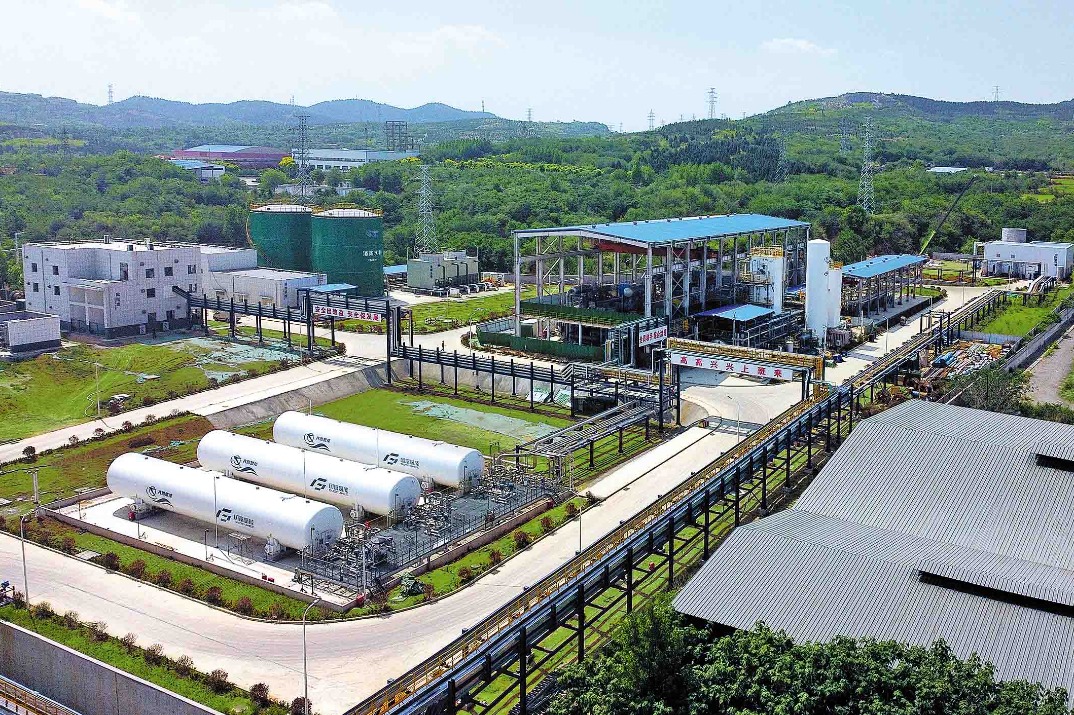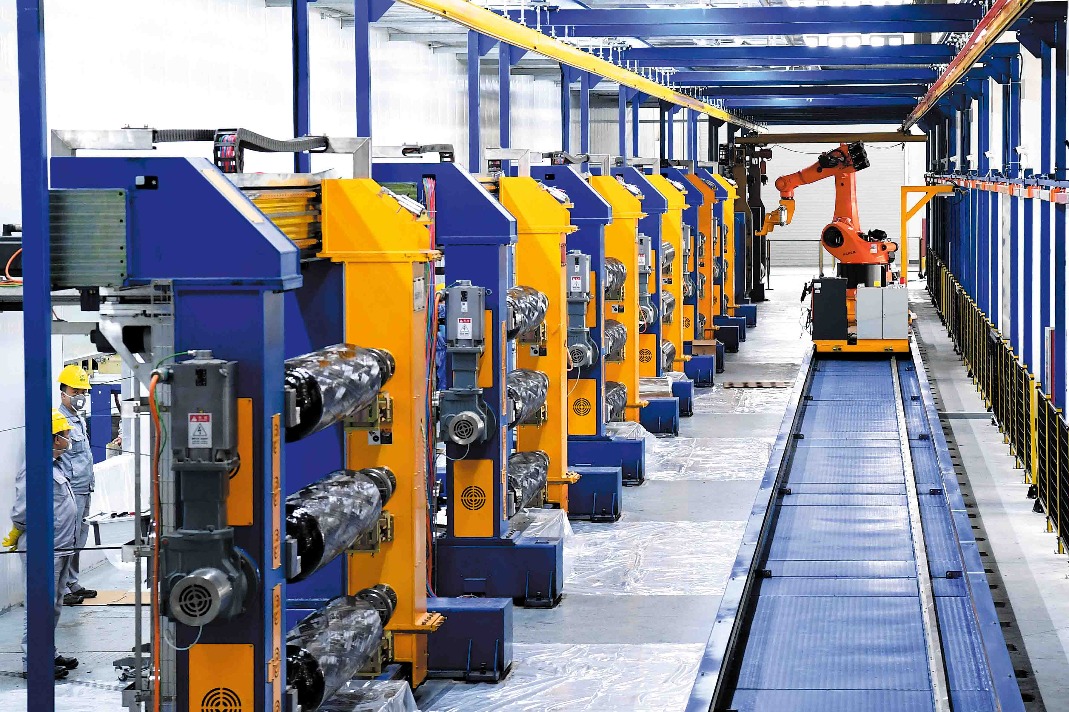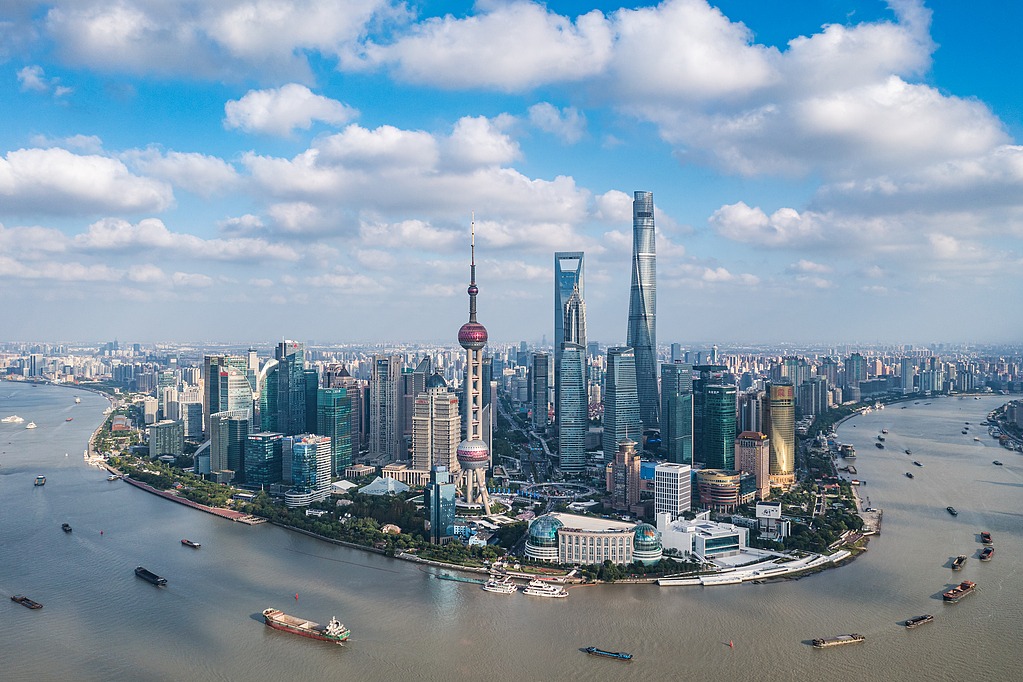The drive toward high-tech roads

Industry experts say that while laws and regulations remain the biggest roadblocks for autonomous driving, it is nevertheless just a matter of time before roads become fully automated

Lu Yan, a senior manager in a German company located in Shanghai's Jing'an district, loves everything about her job except for one aspect — the two-hour commute to work from her home in the suburban Songjiang district every day.
"Every day I have to worry about whether I can book a ride using ride-sharing apps," said the 37-year-old.
Lu is not alone in her struggles. Others like Chen Shouzhen have even resorted to finding another job just to avoid the pain of long commutes.
"The long distance has compromised the quality of my life and work. I have to do everything hastily, I have no time for entertainment or study, and I do not even have enough sleep," said the 23 year-old who used to have to take three modes of transportation — shared bicycle, metro and shuttle bus — to get to work.
Tencent and Penguin Intelligence, a research arm of WeChat's developer Tencent Holdings Ltd, recently released a report on the state of transportation in major Chinese cities which showed that office workers in Beijing have to travel an average of 9.3 kilometers to work every day, the longest distance of all cities in China, according to the Shanghai Observer. The second spot went to Shanghai residents who have to travel an average of 8 km.
However, based on specific groups of workers, those who live in Kunshan of the nearby Jiangsu province and travel to Shanghai for work clock the most mileage at over 40 km. The report also found that 3.2 percent of the commuters in Shanghai have to travel more than 25 km to work.
Yang Diange, a professor who specializes in automotive engineering from Tsinghua University in Beijing, said that connected vehicles and autonomous driving could be one of the solutions to this problem in the future.
While such technology would not reduce the distance people have to travel to work, it would help to reduce the time required.
Safety and efficiency
One of the arguments is that autonomous driving will make public transportation more convenient, reducing the need for people to own cars, which in turn reduces traffic volume and improves efficiency.
Other proponents of autonomous driving point out that sophisticated radar and sensor technologies would help to make driving safer. This would in turn reduce the number of traffic accidents and improve transportation efficiency.
"The self-driving car will not only offer a completely new driving experience, but also change the entire automotive industry...the goal is to let driving become safer, easier and more enjoyable with the ADAS (advanced driver assistance system)," said Frederick Fu, president of Avnet Asia-Pacific, a global distributor of electronic components and technology solutions provider.
Yang added: "Public transportation will be one of the first sectors to apply autonomous driving. (With the help of big data and AI) transportation efficiency would be greatly enhanced.
"Autonomous driving will surely become a reality sometime in the future. It will be a result of the maturing of technologies, laws and regulations."
Li Qingwen, president of China Automobile Evaluation Academy, said that the greatest hurdle standing in the way of mass adoption of autonomous vehicles is not technology but laws and regulations.
One of the biggest hurdles is accountability. With no one at the wheels of a completely autonomous vehicle, the act of assigning blame in the event of an accident becomes complicated. This aspect would also impact insurance claims.
The new norm
There are five levels of autonomous driving, with the fifth representing complete automation. Chinese experts expect half of the new cars in China to have a level one or two autonomous driving level by 2020. Experts also predict that between 10 and 20 percent of new cars in the country will be level three and four by 2025. By 2030, nearly 10 percent of the new cars will be level five.
Between August 2014 and June 2017, some $76 billion was invested in autonomous vehicles globally, according to a new report from the Brookings Institution. Investment not only comes from major automakers like Daimler, BMW, Volkswagen, General Motors Co, Ford Motor Co, but also from tech players such as Intel, Apple Inc, and Baidu Inc.
According to Navigant Research, 120 million autonomous cars will be sold globally between 2020 and 2035.
Tests have already been launched in many states in the United States, and the breakthroughs in key technologies of autonomous driving will increase the popularity of this technology in cities globally, according to Yang.
Guo Ren, associated director of research at Mintel, pointed out that major Chinese corporations and cities including Beijing and Shanghai are already working on paving roads for intelligent and connected car technologies.
On March 1, China's first batch of car plates for autonomous vehicles was issued in Shanghai, allowing these vehicles to be test driven on a 5.6-km trial road in Jiading district. The road was recently extended to 12 km. According to the district's deputy head Lu Zufang, as many as 200 test sites for intelligent driving have been formed within the closed testing area.
"Shanghai is aiming to build a high-tech automobile sector that is intelligent and connected," said Huang Ou, deputy director of Shanghai Municipal Commission of Economy and Information Technology. "Coming up with rules and regulations will be key to the automotive industry's ongoing transition."
The automotive sector in Shanghai plays a big role in the city's economy, growing 19.1 percent year-on-year to 677.4 billion yuan ($106.7 billion) in revenue in 2017, accounting for 19.9 percent of the city's total industrial output value. The city's mayor pointed out that Shanghai will become a national connected car innovation center with global influence by 2020.
In December, Beijing became China's first city to release rules with regard to the road testing of autonomous vehicles. To date, Beijing has decided to set aside 33 roads with a total length of 105 km for open road testing.
A gradual transition
Before autonomous driving is widely adopted, there should first be a stage where regular vehicles and autonomous vehicles are allowed to operate together on the roads as this would allow the artificial intelligence technologies in vehicles to gather sufficient data, said Hendrik Lee, technical general manager of China with u-blox, a Switzerland-based global positioning and wireless communication technologies provider.
This year, SAIC Motor Corp Ltd, the largest auto company on China's A-share market, is planning to release mass-produced cars equipped with intelligent driving technologies to help reduce traffic jams, solve parking difficulties and boost driving safety.
Since 2013, SAIC has tested intelligent driving in closed laboratories, roads, expressways, underground parking garages and other designated areas. The vehicle testing distance totaled 50,000 km.
According to Yang, China faces bigger challenges than other countries in applying autonomous driving technology because of its size and complicated road and traffic conditions. However, these challenges could also prove to be an opportunity, he added.
"Once China overcomes all the difficulties, its model can be applied quickly worldwide," he said.
The Ministry of Industry and Information Technology has set a goal that half of China's new cars and vehicles will be intelligent by 2020 as wireless networks will be able to cover 90 percent of cars in major Chinese cities, and all cars will have access to China's home-grown satellite navigation system BeiDou.
"China has yet to become a leader in this sector, but it has surprised the world in many different sectors before," said Fu.
There are about 200 million automotive vehicles across China, or 150 units per 1,000 people, which is much lower than 800 units per 1,000 people in the US and between 500 and 600 units in Japan and South Korea.
"The revolution of autonomous cars is approaching, and it will only come true with the joint efforts of the automotive and scientific sectors and related industries," said Li.

Contact the writer at wang_ying@chinadaily.com.cn





































